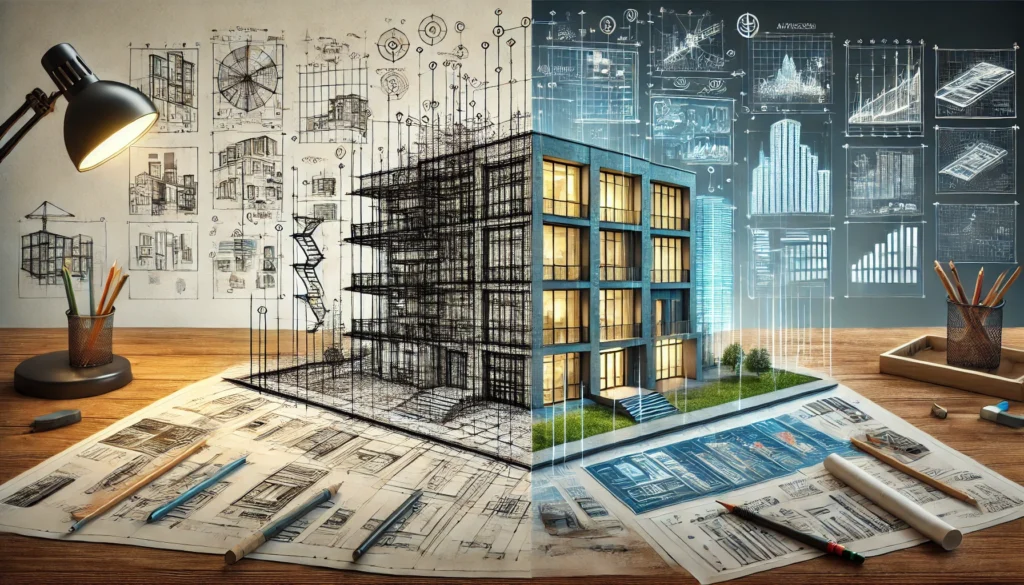Digital buildings are transforming the ways in which we interact with the built environment—driving efficiency, sustainability, and new occupant experiences. However, achieving these benefits is often more complex than it appears.
In this post, I present 5 Realities of Digital Buildings you need to be aware of when embarking on your digital building journey. These are based on lessons I learned over 15 years, designing and implementing a digital building program across a global portfolio of commercial real-estate.
1. There’s No “One Size Fits All” Approach
The notion of a universal approach to digital buildings is a common misconception. While there are emerging industry standards that aim to prescribe an approach, they tend to focus on narrow subsets of building types and are often accompanied by paid certification programs. To date, there hasn’t been industry consensus, or a universal standard. And even if there was, an approach that works for one building may not make practical sense for another given differences in building types, geographic location, budget, and organizational goals.
Digital buildings exist on a spectrum of sophistication; where your building stands on that spectrum and the outcomes it delivers will depend on your organization’s unique needs and goals.
- Tip: Start your digital building journey by developing a clear strategy that addresses your specific challenges and objectives.
2. Not All Vendors Are Equal
The digital building market is vast with vendors ranging from early-stage startups to well-established industry giants. While startups may bring fresh perspectives, they can lack knowledge of the industry and experience in integrating their solutions with building infrastructure. On the other hand, established vendors have deep industry knowledge but are often slower to innovate, and their solutions can be expensive. Understanding the differences in vendor capabilities and experiences is crucial when selecting the right partners for your digital building projects.
- Tip: Look beyond the sales pitch and marketing materials and take the time to perform thorough due diligence when evaluating vendors.
3. Technology Alone Won’t Solve Your Problems
While technologies have the potential to revolutionize building management practices and occupant amenities, they are not always a silver bullet. For technologies to deliver their promised benefits, they need to be effectively aligned with people and processes. I’ve encountered many cases of sophisticated (and costly) digital building technologies that were not generating their intended value simply because they were not being used.
For operational technologies, it is essential to integrate them with your existing workflows and ensure adoption by your facility management team. For occupant and customer-facing technologies, I recommend considering how the end user will interact with the technology and things you’ll do to drive its adoption.
- Tip: Early planning is essential. Before implementing any digital building technologies, consider who will use it, how it will be used, and how you’ll drive its adoption.
4. Integration Isn’t Always “Plug and Play”
Integrating new technologies with existing building systems is usually more complicated than anticipated. Older buildings often present challenges, as many were not designed with modern integration needs in mind. Issues such as incompatible protocols, obsolete hardware, and suboptimal system configurations can all complicate the integration process. Even newer buildings can pose integration challenges, usually stemming from how the systems were configured and commissioned. It can be frustrating to purchase a technology only to find out that you’ll have to spend a significant amount of extra time and money to integrate it.
- Tip: To avoid costly surprises, perform a thorough assessment of your building’s existing systems before introducing new technology. Your assessment should include a system inventory, protocol compatibility check, and system diagnostic testing.
5. Digital Buildings Require Enhanced Maintenance
Most people overlook the fact that digital buildings demand more than traditional maintenance routines. Beyond the regular mechanical upkeep of systems, with a digital building you’ll also the need to manage software applications, data flows, and cybersecurity measures. Keeping software applications running and data flowing is critical to a digital building’s operation.
- Tip: Plan for enhanced maintenance practices for your digital building. Key considerations include: periodically updating software/firmware, monitoring for data integrity, and having a solid response procedure in case of system communication or data outages.
Navigating these Complexities
Ensuring success with digital buildings requires thoughtful planning spanning how technology is designed, implemented, used and maintained. Organizations often overlook the finer important details, which can result in less-than-optimal project outcomes and negative experiences.
For those embarking on their digital building transformation, consider working with specialized talent—either by growing your talent pool or by partnering with external specialists (for example, Evolv Engineering) who can guide you through the complexities of projects.
In my upcoming posts, I’ll delve deeper into how you can design a bulletproof strategy by offering practical tips and lessons learned to help you succeed in your digital building journey.
As always, I’m open to feedback and topic suggestions—feel free to reach out!



